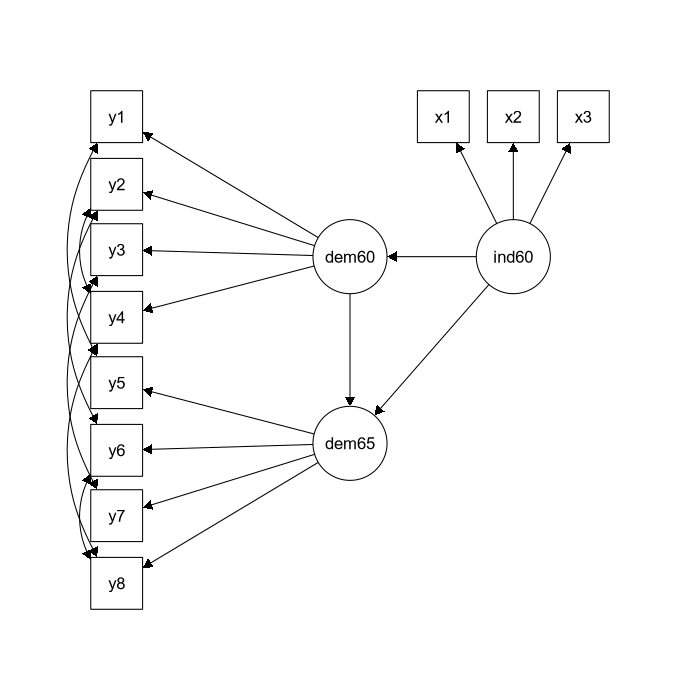myModel <- '
# latent variables
ind60 =~ x1 + x2 + x3
dem60 =~ y1 + y2 + y3 + y4
dem65 =~ y5 + y6 + y7 + y8
# regressions
dem60 ~ ind60
dem65 ~ ind60 + dem60
# residual covariances
y1 ~~ y5
y2 ~~ y4 + y6
y3 ~~ y7
y4 ~~ y8
y6 ~~ y8
'
fit <- sem(model = myModel,
data = PoliticalDemocracy)
summary(fit)About lavaan
News:
(21 Dec 2025): lavaan version 0.6-21 has been released on CRAN. See Version History for more information.
(5 Dec 2025): two new tutorials are available: “How to evaluate theory-based hypotheses in a lavaan model using the GORICA”, and “A Tutorial for Understanding SEM using R: Where Do All the Numbers Come From?”
(25 November 2025): Utrecht University is organizing an e-learning course on Structural Equation Modeling in R using lavaan as part of its Winterschool (2 – 27 March 2026).
What is lavaan?
The lavaan package is developed to provide useRs, researchers and teachers a free open-source, but commercial-quality package for latent variable modeling. You can use lavaan to estimate a large variety of multivariate statistical models, including path analysis, confirmatory factor analysis, structural equation modeling and growth curve models.
Yves Rosseel (2012). lavaan: An R Package for Structural Equation Modeling. Journal of Statistical Software, 48(2), 1-36. URL http://www.jstatsoft.org/v48/i02/
First impression
To get a first impression of how lavaan works in practice, consider the following example of a SEM model. The figure below contains a graphical representation of the model that we want to fit. 
This is the corresponding lavaan model syntax: